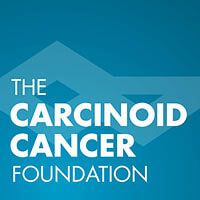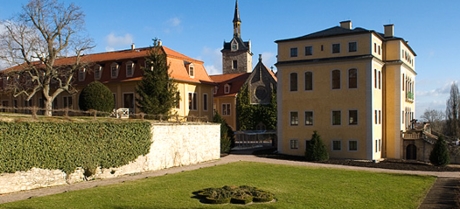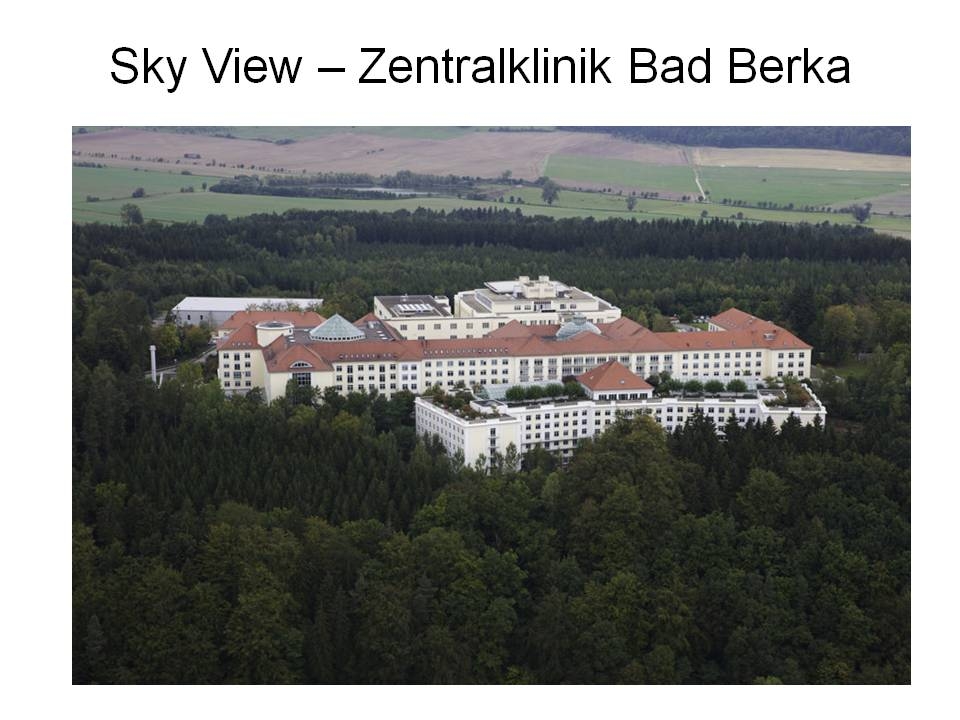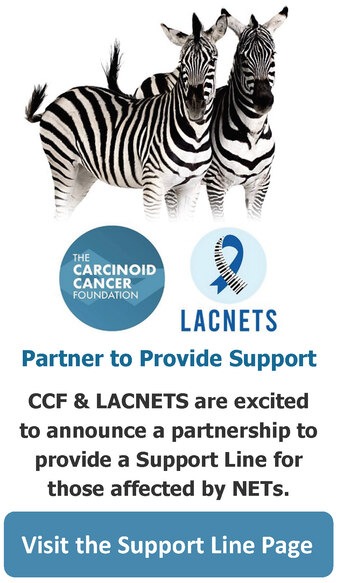Since 1997, when he first used the radiolabeled peptide Y-90 DOTATOC (a somatostatin analogue) to treat a 15-year-old boy with a rare neuroendocrine tumor, called paraganglioma, and saw the boy go from being wheelchair-bound and in terrible pain to a young man of 20 who was walking and playing soccer, Prof. Dr. med. Richard P. Baum has been passionate about Peptide Receptor Radionuclide Therapy (PRRNT). To share his enthusiasm and knowledge with physicians and scientists throughout the world, Dr. Baum and his colleague from Mainz, Prof. Dr. sc. nat. Frank Rösch, have created the 1st World Congress on Ga-68 and Peptide Receptor Radionuclide Therapy. This Congress, co-organized by the Department of Nuclear Medicine/PET Center, Zentralklinik Bad Berka and the Institute of Nuclear Chemistry, Johannes Gutenberg University, Mainz will be held June 23 – 26, 2011 in Bad Berka, Germany.
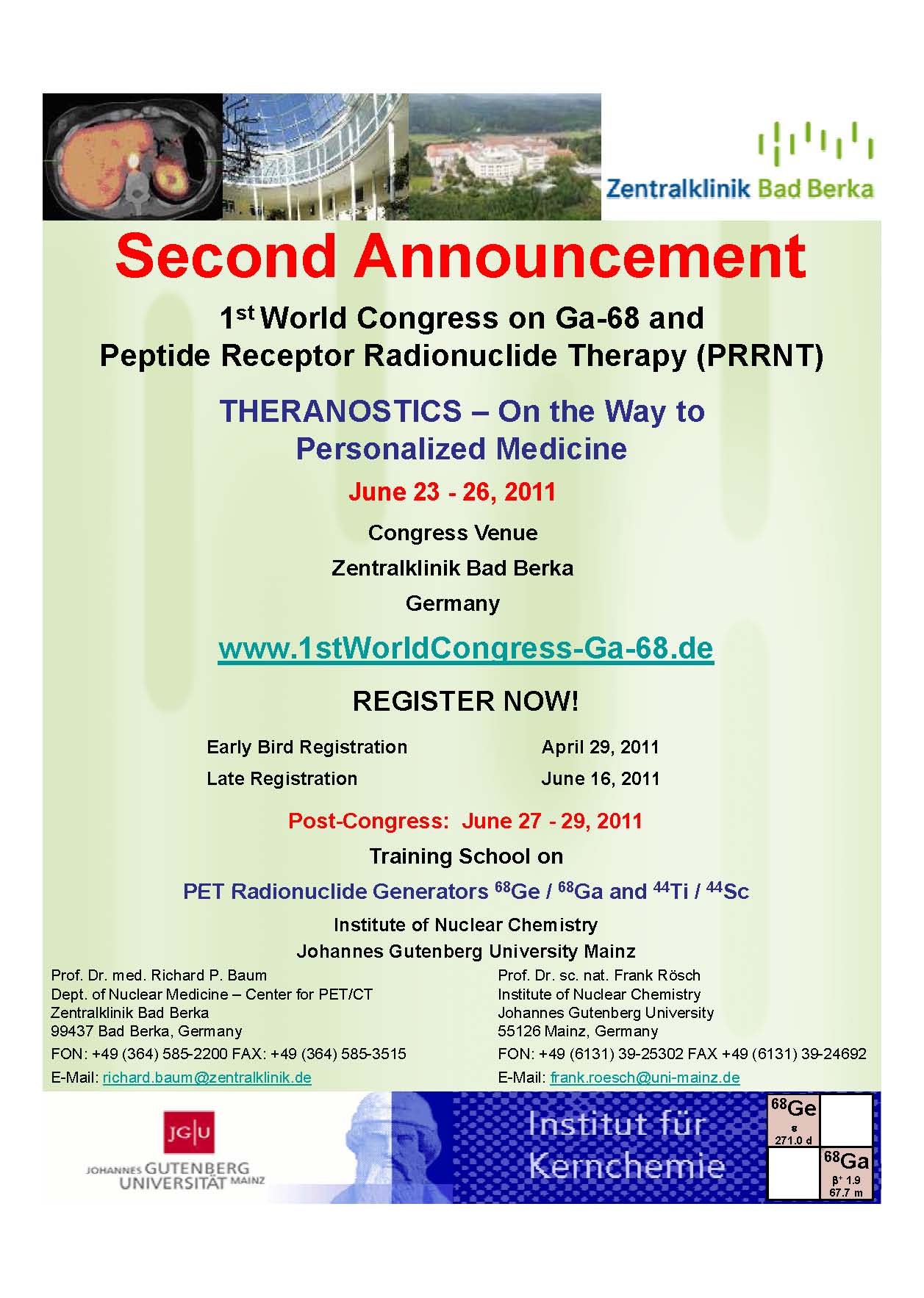 The Congress is also presented in collaboration with the International Atomic Energy Agency (IAEA), the World Association of Radiopharmaceutical & Molecular Therapy (WARMTH), and the World Federation of Nuclear Medicine and Biology (WFNMB).
The Congress is also presented in collaboration with the International Atomic Energy Agency (IAEA), the World Association of Radiopharmaceutical & Molecular Therapy (WARMTH), and the World Federation of Nuclear Medicine and Biology (WFNMB).
The major theme of the Congress is THERANOSTICS – on the Way to Personalized Medicine. Personalized medicine is a rapidly growing field of healthcare in which treatments are as individualized as the disease they are targeting. Factors taken into consideration are each person’s unique clinical, genetic, genomic, and environmental information. This is especially important for neuroendocrine cancers such as carcinoid and pancreatic neuroendocrine tumors because, according to Dr. Baum, NET cancer is not one disease. Neuroendocrine tumors are not a single tumor entity, he explains, but probably a 100 tumor entity with many different features. Thus the treatment for each patient must be based upon whether the tumor is progressive, aggressive, and the biological behavior of the tumor.
Physicians, chemists, and scientific investigators — those who are new in the field and those who wish to broaden their understanding of the rapidly developing research and clinical applications of Gallium-68 and other generator-produced PET radioisotopes — are encouraged to attend. Speakers from throughout the world will share fascinating insights into their research and clinical work.
A number of companies, including EZAG (Eckert & Ziegler Strahlen-und Medizintechnik AG), Berlin, ITM GmbH, Munich, Siemens AG, Erlangen, IDB Holland bv, PV Baarle-Nassau, and many others will participate in the Industry Exhibition, where they will present the latest technological developments in generator technology and Ga-68 modules, devices and labeling strategies.
Post Congress, from June 27 to June 29, a limited number of participants will have the unique opportunity to participate in a hands-on Training School on PET Radionuclide Generators 68Ge/68Ga at the Institute of Nuclear Chemistry of the University of Mainz. The training school will combine both theory and practice on topics ranging from generators to ligands and labeling to GMP and regulatory aspects.
Topics and highlights of the Congress include:
- Chemistry of new Ga-68 labeled tracers
- Regulatory issues related to investigational radiopharmaceuticals
- Large scale production of therapeutic radionuclides (Lu-177, Y-90, and other trivalent therapeutic radiometals)
- Ga-68 imagining in clinical practice – worldwide experience (Europe, Asia, South America, Africa)
- Ga-68 for imaging bone metastases
- Current progress and novel developments in ongoing research projects
- Milestones of PRRNT – clinical applications and future developments
- Selection criteria for PRRNT
- Diagnosis and follow-up after PRRNT using Receptor PET/CT
For further details about the 1st World Congress on Ga-68 and Peptide Receptor Radionuclide Therapy, CLICK HERE.
Why are the Ga-68 scan and PRRNT so important for carcinoid/NET patients? They are in the forefront of imaging, diagnostic, treatment and follow-up tools for NET cancer. The Ga-68 scan is extraordinarily clear and sensitive, explains Dr. Baum, and can detect neuroendocrine tumors as small as 4 millimeters. It is also an excellent tool for measuring the density of a patient’s receptors. This is especially important as the only way PRRNT can work is for patients to have somatostatin receptors in their tumors.
PRRNT is effective, says Dr. Baum, even for very advanced cases. The treatment leads to a significant improvement of clinical symptoms such as decreases in flushing, pain and diarrhea; weight gain in underweight patients; the ability to give up octreotide therapy; and improvement of overall health.
Most importantly, the median overall survival of patients from the start of treatment is 59 months.
Who should consider PRRNT? Patients with progressive tumors and uncontrollable symptoms despite the maximum conventional therapies may be good candidates for the treatment. It is also critical to take into account the size and number of tumors as well as their location. Other factors such as age and physical condition must also be considered. Baum’s Bad Berka Score (BBBS) to determine whether or not the patient is a good candidate for PRRNT includes the time since diagnosis, previous therapies, liver involvement, extrahepatic tumor burden, blood counts, the Ki-67 proliferation rate which measures how fast tumors grow, and kidney function. And the greater the number of receptors a patient has, as determined by the Ga-68 SMS scan, the greater the success of the PRRNT treatment. All of these factors are used to determine whether or not to proceed with PRRNT and if so, whether to treat with less frequent and higher radioisotope activity (high volume disease) or more frequently with lower doses of the radiolabeled peptides (small volume disease).
A systemic form of treatment that will affect NET tumors wherever they are in the body, PRRNT is used primarily for patients with nonresectable tumors at multiple sites. Some patients who have tumors predominantly in their liver are treated with PRRNT in order to reduce the size and number of metastases present in the liver or elsewhere in the body, or in preparation for surgery (neoadjuvant PRRNT).
PRRNT should only be performed at specialized centers, says Dr. Baum, as NET patients need highly individualized and interdisciplinary treatment and long-term care. Typically, patients receive 3 to 6 cycles of PRRNT, with some receiving up to 10. PRRNT with Lu-177 is more suitable for patients with reduced kidney function and is for patients with smaller metastases, but works also in large tumors. PRRNT with Y-90 is better for patients with huge metastases.
Dr. Baum has performed Ga-68 scans and PRRNT treatments on patients as young as 2 and as old as 86, with a median age of 59 years. He has treated nearly 1,000 patients with these therapies. Dr. Baum is presently creating a database of patients based on the more than 3,000 PRRNT treatment cycles he has performed so that other physicians can benefit from the data, which includes over 250 variables per patient in the database.
To view an excellent video presentation by Dr. Richard Baum on PRRNT in Germany, presented at the 2009 U.S. National Carcinoid/NET Patient Conference in New Orleans, CLICK HERE, and scroll down to “Nuclear Medicine, PRRNT and other Radiotherapies Presentation Recordings” in Day 2 Afternoon.
To learn more about PRRNT (peptide receptor radionuclide therapy) at Bad Berka, visit the following websites: http://prrtinfo.org and http://www.neuroendokrin.de (for the English version, CLICK HERE).
